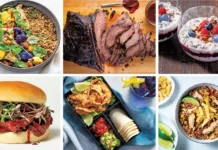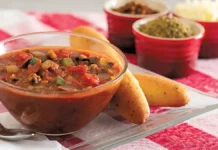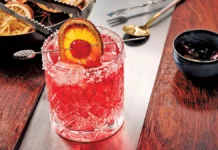
If you don’t, all of your prime cost numbers will be wrong
The key to calculating your restaurant’s prime cost starts with using the right sales figures. Prime cost is your total cost of goods sold [food, NA beverage, liquor, bottle beer, draft beer and wine cost] plus your total labor cost including taxes, benefits and insurance.

What do you mean, David, the right sales figures? Sales are sales, right? While on the surface the short answer is sales are sales, the long answer is there are gross sales and net sales. So what’s the difference and why does it matter?
Gross vs net sales
The primary purpose of this article is to make sure you are using the correct sales figures when determining your prime cost and that starts with defining the difference between gross and net sales. One of the challenges in understanding the difference often comes from the fact that the vast majority of point of sale (POS) systems label net sales as gross sales, and you don’t even know you’re looking at the wrong number.
Gross sales is the ring at the register, before discounts and not including sales tax. Sales tax is the pleasure the government gives us to collect their money and penalize us as if they were the mafia if we borrow it and pay it late. Sales tax collected is not a sale. An example would be if you sell a burger at $10 and the customer used a $5 coupon when paying for the burger, $10 would be gross sales, the sale before the discounts are taken off the ticket.
Net sales is the ring at the register, after discounts have been removed and not including sales tax. Using the example above, you sell a burger at $10 and the customer used a $5 coupon when paying for the burger, $5 ($10 gross sale minus the $5 coupon/discount) is your net sales.
As I mentioned before, the vast majority of POS systems get this wrong. Most POS systems label net sales as gross sales. Take a look and you will find that the column on your daily sales report that is listed as gross sales has discounts already removed, making that number your net sales figure.
The importance
Why is it important to understand the distinction between gross and net sales? The down and dirty answer is, so you can calculate your prime cost correctly. If you use the wrong sales figures, your food cost will look high and you might fire your chef over it. Your pour costs will look high and you might fire your bar manager over it. Heck, you might fire your general manager over the fact that they cannot get their numbers under control and the reality of it is, they actually may have their costs in line, but you were using the wrong sales figures to calculate it.
Use net or gross sales
Great! So which sales figures do you use to calculate your prime cost? GROSS SALES!
Let me show you why. Let’s say you asked your chef or kitchen manager to do a recipe costing card for a burger to come in at a 30 percent food cost target. He or she does exactly that, creates a burger recipe costing card using $3 in product and decides you can sell that burger for $10. Divide (the cost of the recipe) by sales (the menu price) to get your food cost, in this case 30 percent.
Let’s say you decide to run a BOGO offer (buy one, get one free) for burgers. This promotion is wildly successful at driving guests in the door. That means for every other burger you sell, you are discounting $5, making the gross sales figure $5, not $10, and the net sales figure $5. The recipe costing card still requires the kitchen to use $3 in product. When calculating food cost off of net sales, use ($3) divided by sales (net sales of $5), gives you a cost of goods sold equalling 60 percent. It’s doubled!
Now let me ask you a question, is it your chef or kitchen manager’s fault that you decided to run an aggressive coupon offer and that his or her food cost has shot through the roof because of it? No, your chef or kitchen manager has no control of promotional discounting. To be fair, you must measure your chef or kitchen manager off of gross sales, not net sales, to know if they are running the kitchen properly.
Don’t get me wrong, discounts need to be tracked and controlled. Because discounting is real money you don’t collect. It’s like saying to your guest, “no thanks, don’t pay me what the menu says. Go ahead and just give me less.” And the last time I checked, cash is still king in your business. It’s how you pay your bills. You can’t go to the power company with a case of steaks and say, “Boom, we’re even!”
If there was not discounting and your chef or kitchen manager followed recipe costing cards and brought in the labor to handle the business as budgeted, the correct measurement on how they are doing their jobs is when you use gross sales to calculate your prime cost.
If you need more help understanding why gross sales are the key to accurate prime cost numbers, contact TheRestaurantExpert.com today.
























Comments are closed.